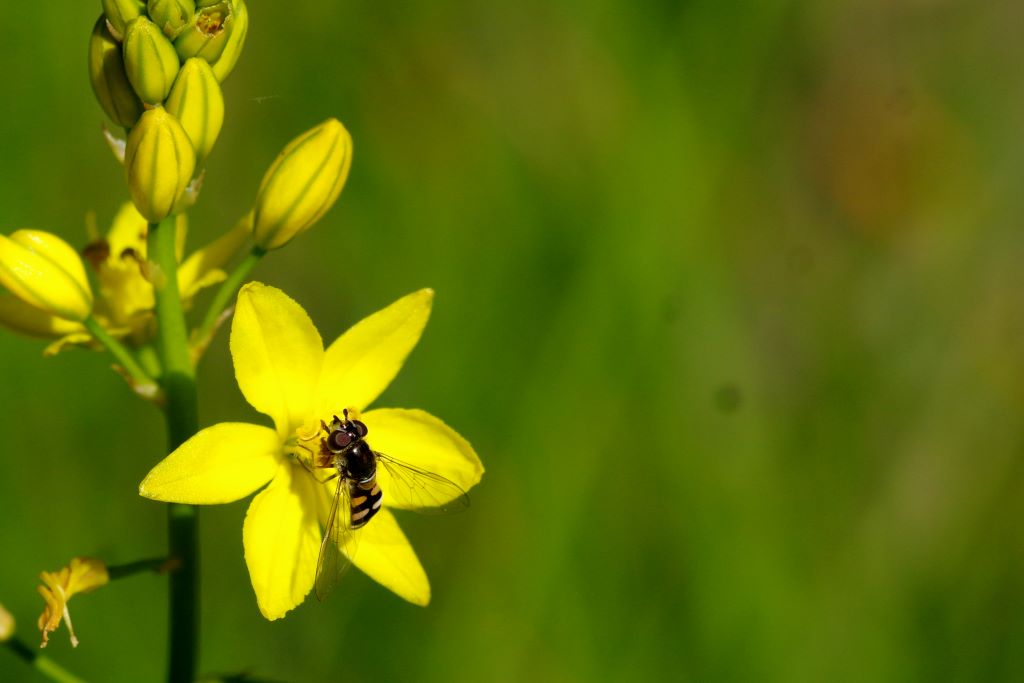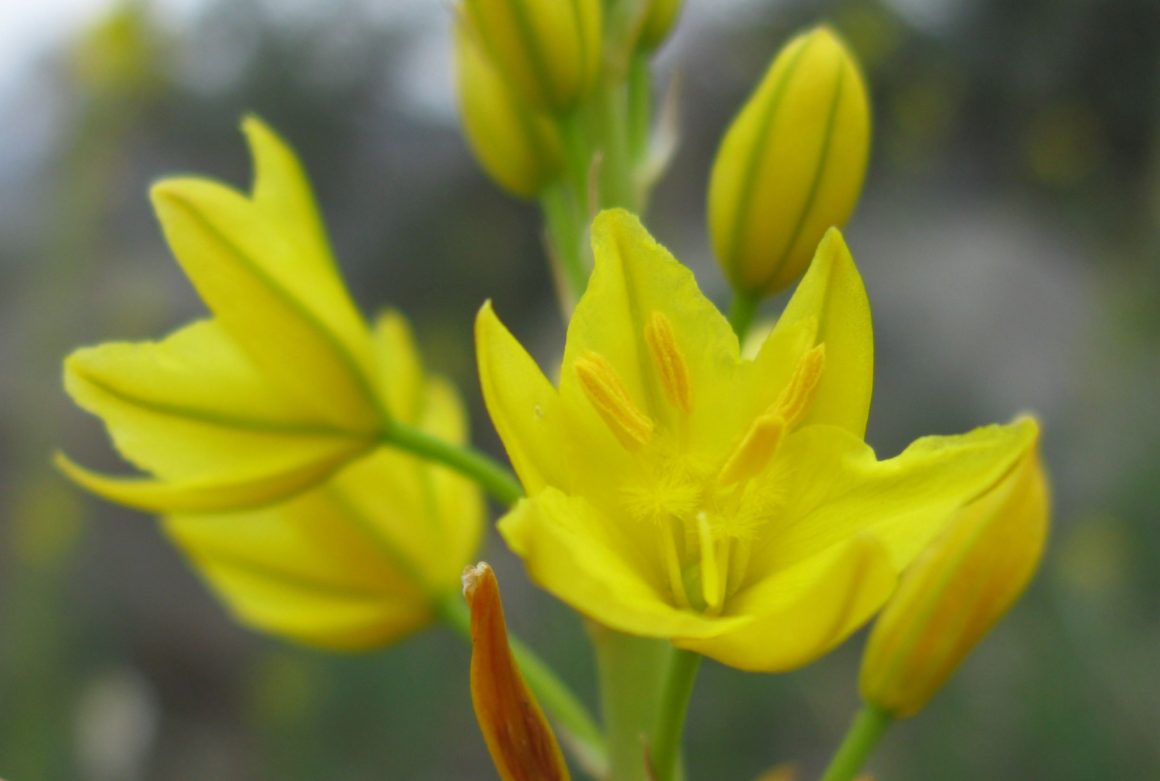Aussie home gardening has its roots in the horticultural history of Europe, from the quaint cottage gardens of England to the vibrant fields of tulips that grace the Netherlands. So, it’s hardly a surprise that many Australian gardeners still overlook the flowers of our incredible native bulbs and tubers in favour of more familiar exotics like Hyacinths and Daffodils. Though many of these introduced bulbs are spectacular, it’s time Aussies embraced our native flora; and what better way than replacing a common exotic bulb with its indigenous equivalent. This winter, why not ditch the Daffodils in favour of the Bulbine Lily (Bulbine bulbosa).
Technically, the bulbine lily produces a corm (a kind of swollen root) rather than a bulb. However, much like Daffodils, during the drier months of summer, they die back to their underground storage organ until the cool, wet winter weather arrives, when they sprout again. This strategy has allowed them to adapt to the dry Australian summers. Because of this, they have spread throughout much of eastern Australia including South Australia, Victoria, Tasmania, New South Wales, and Queensland. They have also managed to spread across a wide range of habitats including forests, meadows, seasonal wetlands, and rocky outcrops. They really are incredibly versatile plants!
The Bulbine Lily was also a food source for Australia’s First Peoples and was generally regarded as one of the sweetest-tasting of all the native roots.
Best of all, the Bulbine Lily produces a stunning flower spike of cheery golden blooms throughout the springtime (and even into summer in some parts of the country). These sweet-scented flowers are not only great for gardeners, but also for wildlife. They’re a key springtime food source for a range of native pollinators, particularly native bees and Flower Flies (also called Hoverflies). So, by cultivating some Bulbine Lilies, particularly in the suburbs or city, you’ll be helping to feed our precious native pollinators as they navigate the concrete jungle.

Once they’re repotted, give them a good drink and keep their soil moist, though not wet. Bulbine Lilies prefer a bright spot with direct sunlight, and the more sun you give them, the better their flowers will be come springtime.
So, how about planting some Bulbine Lilies this winter? They’re inexpensive, you’ll get stunning flowers, they’ll feed native pollinators, and you’ll be future-proofing your garden with a hardy native species that can survive climate change.
Banner image by Harry Rose [CC BY-NC-SA 2.0], via Wikimedia Commons.


Leave a Reply